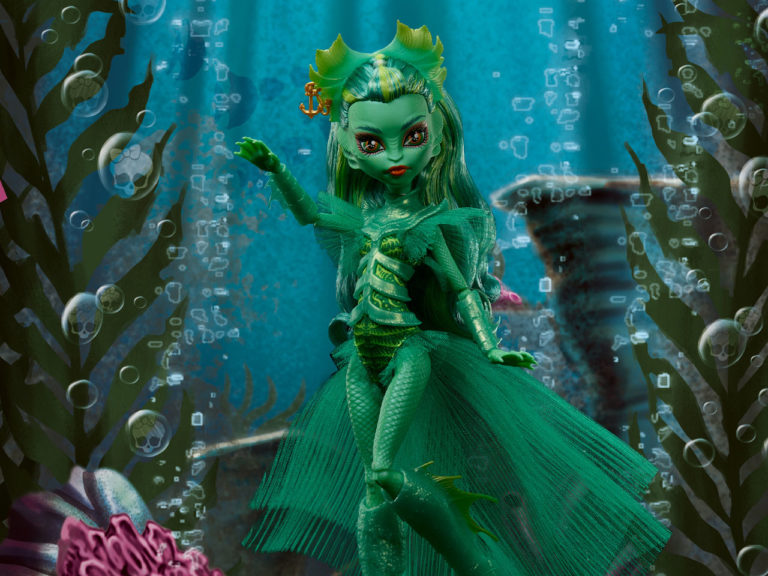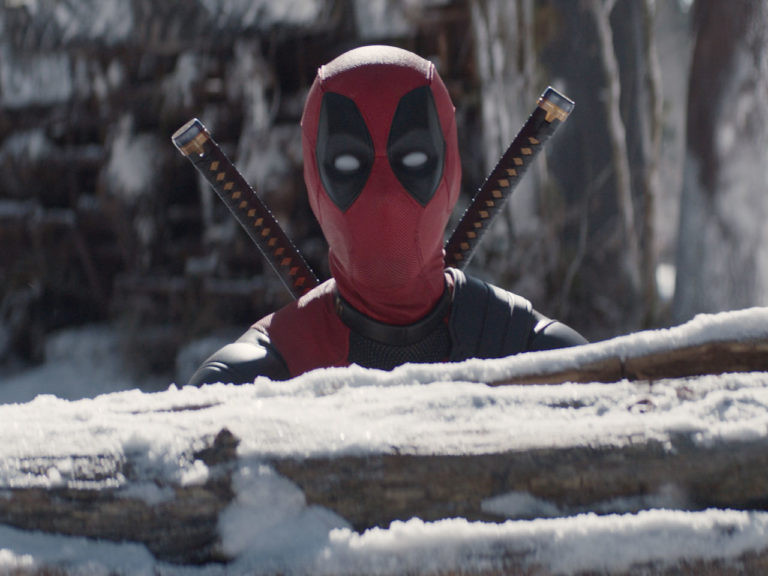
Last month, in #38, we saw that the Captain Prohaska’s AI got hacked and the super-soldier started to wreak havoc. Then, the one who’d taken over his AI, also took control of the parietal lobe of every living being in Washington, including the president. The following threat was made to Flag: don’t send any super-humans into town or every person’s brain will be switched off. The only ones allowed into the city are the members of the Suicide Squad. This issue, #39, picks up where we left off last time, with the squad entering the city by aircraft and prepping for battle.

So, guess what? While it’s not back at the level of quality we saw earlier in the run, this issue is definitely a step in the right direction. In fact, this one reads more like a Suicide Squad story than any of the preceding parts. I realize that what I’m about to say sounds somewhat contradictory (as one of my points of criticism on previous issues was that they all were so predictable), but while I still feel like I know where this is going, at least it’s embracing the spirit of Suicide Squad again. I’ll explain what I mean.
First things first, we finally have the band back together! Over the course of the last few issues, the team had not been together as much. Flag wasn’t actually on the team anymore, instead working for the president as Captain Prohaska’s military handler. The others were locked up in separate cells, and when they got transported to another prison facility, due to Belle Reve getting shut down, they were all separated from each other. However, #39 doesn’t waste any time and cuts right to the chase: the Suicide Squad is sitting aboard an aircraft, on their way to Washington, listening to Rick Flag’s briefing of the mission. It all feels very familiar, and that’s a good thing. It looks like the Squad as we know it is back in action.
Rick Flag is written consistently throughout the book, and comes off as a strong and confident leader of the team. He’s driven and focused, cares about the lives of innocents, and doesn’t tolerate any sort of unruly behavior. He keeps the squad in line by immediately shutting up those who attempt to vex him, threatening to blow up their bombs if they do. And although the squad members try not to show that they’re impressed and possibly even intimidated, they do comply and follow his orders. What we have here is a Rick Flag who fully embraces his role as a leader. Additionally, Williams gets his voice just right. In Flag’s dialogue, there are no questions, and mostly imperatives. He’s straight to the point, and his briefing is quick yet detailed. Flag’s also a smart guy in that he’s taken precautions to ensure that the mission remains covert. However, while that in itself is definitely a smart move and I’m glad that Williams has attributed this to Flag, I am not entirely buying the way the strategy itself is written here.

Last issue, the villain made the threat to explode the brains of every citizen in Washington the moment any superhero would show up. The only ones allowed in the city are the members of the Suicide Squad. In order to keep the Squad’s mission secret, Flag states that all CCTV devices in the city have been shut down, as well as the internet, to make it look like there’s a massive power cut going on to the rest of the world. But if I stop to think about this, to me it seems very likely that the Justice League will notice this massive power cut. It’s not much of a stretch that they’d want to investigate this massive power cut. Flag can’t and won’t contact the League because that would give away the Suicide Squad’s mission, but that doesn’t mean that the League can’t get involved on their own. My point is this: the current situation is too big and too public for the Suicide Squad, even with the precautions that Flag’s taken. It doesn’t work for me and I can’t buy that their mission can remain covert—not with all these countless of other super-teams running around in the DCU. Someone’s gotta find out, right?
That said, I think the team dynamics are quite entertaining to read. Williams writes the dialogue of each member of the squad well, and especially Enchantress stands out to me in this book. Her lines are lyrical and over-the-top, and it’s hard to take it all seriously—but that’s precisely what I like about it. For example this line: “Come, Croc, together we shall build an entrail-threaded flag made from mortal cattle.” It’s evil and sickening and not at all something a person would realistically say, but as we’re dealing with a larger-than-life character I don’t think her lines should be realistic and grounded. In fact, I enjoy that Williams is embracing the craziness and getting creative with dialogue. In previous issues I complained that the banter between the Squad members came off as dull and uninspired because their conversations just felt mandatory and forced. But here, as the Squad is prepping for battle, the banter works. It belongs in the moment, and reading all these distinct voices in the same scene is just a lot of fun and adds to the overall reading experience because it makes the narrative more colorful. Lastly, we see the team really sticking up for each other. Even though they may insult each other along the way, the moment one of their teammates is down they will rush to their aid immediately. It’s clear not all members like each other, but they’re in this together and so they’ll stand together. This gives us plenty of reasons to root for the team.
The overall pacing of the comic works mostly fine. The briefing brings both the characters and us readers up to speed, and the moment that the team lands in Washington—which happens in the early pages—the action starts and doesn’t stop until the issue’s finished. Williams has constructed a narrative that allows for a build up to a climactic ending as well. First, the Squad is listening to the briefing and not much happens in terms of action. Next, the Squad touches down in the city and they begin to move toward their target, running out of the aircraft, right into the city—it’s almost like they are as happy that they’re back together as I am. Then, due to a delightfully stupid and characteristic move made by Boomerang, the shit hits the fan and action explodes off the page. Finally, Captain Prohaska himself shows up and the battle that follows looks and feels like a boss fight in a video game. The Squad is forced to work together to defeat him, but even then he’s giving them a hard time. However, just when the narrative is supposed to reach its epic conclusion, it becomes rather anti-climactic. I’ll elaborate on this in the spoiler tag.
When it comes to the climax of the issue itself, we just see Prohaska escaping the Squad and flying off into the distance. Because Deadshot’s incapacitated, Flag has to try and take Prohaska down with a sniper rifle, but misses him. While this is still okay, because it sets up a cliffhanger for next issue, I think what follows is too convenient and anti-climactic for my liking. Just as Prohaska leaves, all the citizens in Washington are no longer possessed, and they stand about confused among the rubble and collateral damage caused by the Squad’s fight with Prohaska. The situation is just too easily resolved, and there are no consequences with regards to a wrecked Washington DC, or brain-fried citizens. Seriously, if the Justice League hadn’t gotten involved before, I don’t see why they wouldn’t now. Once more, I think the whole situation is too big and public for a black ops team like the Suicide Squad.
Finally, I want to talk about the villain of this arc. I’m 100% sure that Hack is the one who has, well, hacked Prohaska’s AI. What I think is weird, though, is that the story is still being written as if it’s building toward an epic reveal as Williams keeps dropping hints throughout. If the intention is to surprise people in the end by showing that it’s been Hack all along and that she’s not in fact dead, I’m really not sure if that will work out at all. I don’t think I’m the only one who’s sure that it’s Hack. I’m wondering why the creative team isn’t just owning up to it, and making it clear to the readers that it’s indeed Hack from the get-go, instead of incorporating all this seemingly pointless build-up and hinting at something that’s so obvious. I honestly think that it takes away some of the impact of the story, because it feels like they are dragging this out for no reason. I’ll admit I find it a bit annoying. Having said that, if it turns out that I’m completely wrong and that Williams is actually working toward something else entirely, then I’ll happily change my opinion on this. I just don’t think that’s going to happen, though.
As for Hack’s motivation, it’s clear she has a personal vendetta against Waller. What is interesting about Hack, though, is that she seems to be convinced that she’s the hero in this story: “I’m the […] hero here.” And if I take this into consideration, I guess she isn’t entirely wrong about that. After all, she’s fighting a group of super-villains and she’s against Waller’s manipulative tricks and cold killer attitude. But Hack herself isn’t acting like a hero at all. She’s accusing Waller and the Squad of things that she’s guilty of herself in some shape or form. This implies that she’s projecting a lot of her own personal issues on others, and so the question becomes: is she fighting Waller and the Squad, or is she fighting herself? Unfortunately, Williams never takes things this far in the story, and I think that’s a bit of a missed opportunity. Some deeper look into Hack’s psyche might add more layers to the character. And yes, I think a lot more could be done with her on top of the character development Williams has already given her in preceding issues, because those moments didn’t amount to more than glimpses. On the other hand, though, I get that such development might not fit in the pacing and structure of this particular issue. But I’d certainly be interested to see Williams taking things a lot further than he has so far with the character of Hack, to make her more of a compelling and interesting villain. As it stands, I feel like this is still missing; I feel like the character needs more work to make me really care about her and want to continue reading about her.

Moving on to the artwork, this time we have Neil Edward as penciller and inker. Edward draws a very consistent-looking book, where bodily proportions are believable and where there’s action and movement in nearly every panel. The art helps to streamline the story, as the panels flow into each other nicely. Clearly, Edward knows how to draw sequential art, and in a book where there’s a lot of fighting, this is crucial. I especially enjoy the fight scene between Prohaska and the entire Suicide Squad. Looking at the art, I can almost feel the powerful blows that the characters deal each other, and especially when Croc leaps at Prohaska, it’s like Croc is about to leap out of the 2-dimensional realm of the comic and into our own. Besides well-drawn action, Edward also draws faces very well. The expressions match what the characters are saying, and I especially think it’s noteworthy that faces remain so consistent from panel to panel, and from angle to angle. Furthermore, Edward’s inking matches the pencils well enough as it definitely helps to add contrast, shadows and to make characters’ figures stand out more against the backdrops. However, I do think that sometimes his inks are a little too thick, which can muddle up some parts of panels. Besides, I think some of his backgrounds lack detail which makes them rather uninteresting to look at, and since I’m a fan of detailed backgrounds, I wish that Edward had focused a little more on this. At the same time, I understand that with deadlines, choices have to be made, and mostly it’s better to put more emphasis and focus on characters and action. Overall, the art is up to par as Edward is a good storyteller. I wouldn’t mind to see him return to the pages of Suicide Squad in the future.
Ulises Arreola is providing the colors, and he’s about as consistent as Edward is with his pencils. Therefore, the colors, pencils and inks really blend together quite nicely. What I’m missing, however, is more of a sense of depth. The color-work, in places, makes some panels look somewhat flat to me, as if most of what we see is placed on the same layer. But other than that, the book looks quite good, and the artwork as a whole fits the gritty tone of an action-packed Suicide Squad comic.
Recommended if…
-
You like dynamic action scenes, because this comic has plenty of them
-
You like seeing the Squad really work together as a team
-
You are a fan of the Enchantress/Croc romance
-
You are a fan of Rick Flag
Overall: This is definitely a step up in quality. It’s an entertaining comic, action-packed, and it is structured in such a way that it gets more and more intense. Unfortunately, at the point where the climax is supposed to be, it sort of peters out in my opinion. But with entertaining banter, a strong and charismatic Rick Flag, and solid artwork, I think you will still have a good time with this issue. It’s not a home-run yet, but it’s definitely not as bad as the series has been recently.
Score: 6.5/10


